Tuesday, 8:00am
6 February 2024
Kitty kitty bang bang
Cute
Embankment Galleries, South Wing, Somerset House, London WC2R 1LA. 25 January to 14 April 2024An new exhibition in London examines the irresistible power of kawaii, or ‘cuteness’
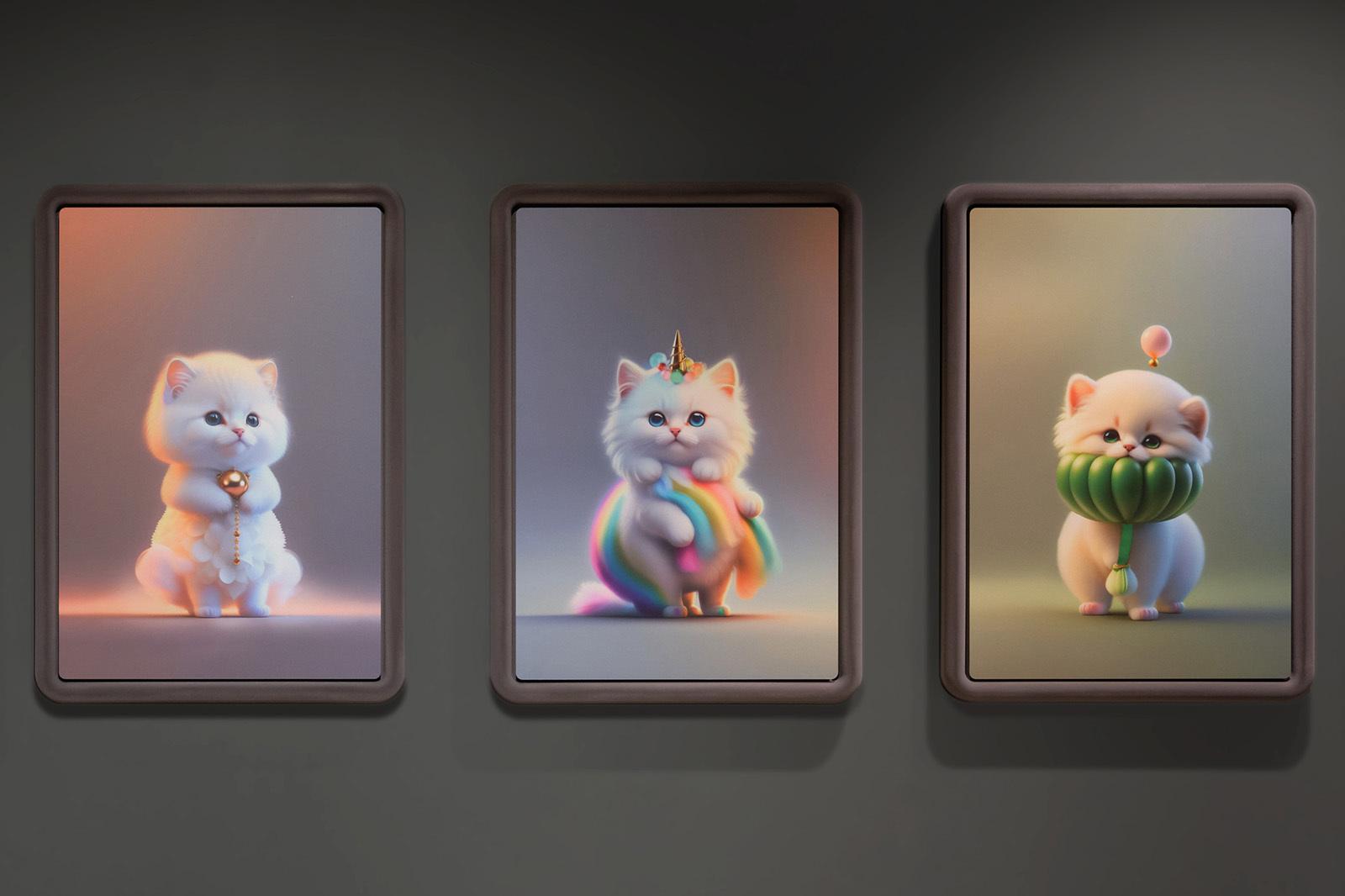
You enter ‘Cute’ at Somerset House through a gallery of AI kitten images created by Graphic Thought Facility (GTF) writes Janet South. Using Lexica Aperture (V3) software, Paul Neale and the GTF team used text prompts such as ‘white, fluffy, kitten’ or ‘kitten holding book’. They were surprised at how good the software was at rendering cuteness and fur. The images (edited down from 7000 options) also produced unexpected ‘hallucinations’ – on inspection, some kittens appear to have more than the usual number of limbs.
The first room continues the theme with Louis Wain’s midcentury cat pictures, Victorian cat postcards and Cat-tharsis, artist Andy Holden’s display of cat ornaments from his late great-grandmother.
Cat-tharsis by Andy Holden. Photo by Janet South.
Top. Variations on Playing dress-up with AI by Graphic Thought Facility, 2024.
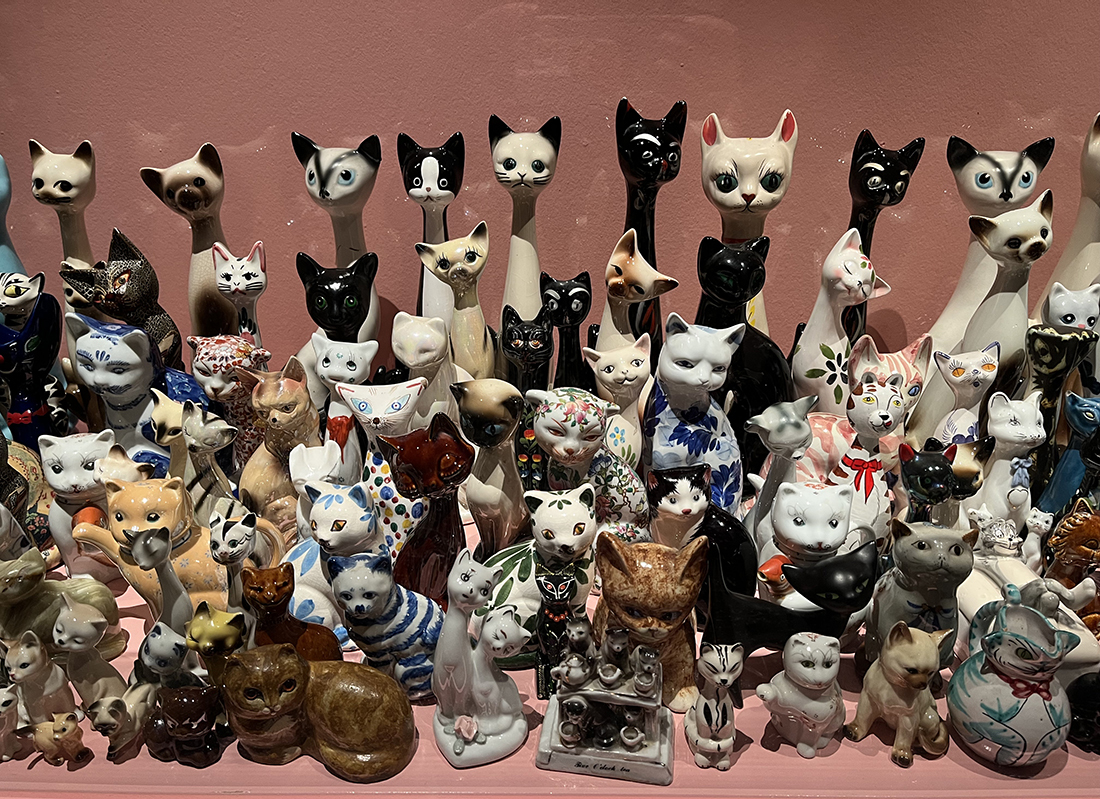
Playing dress-up with AI by Graphic Thought Facility, 2024.
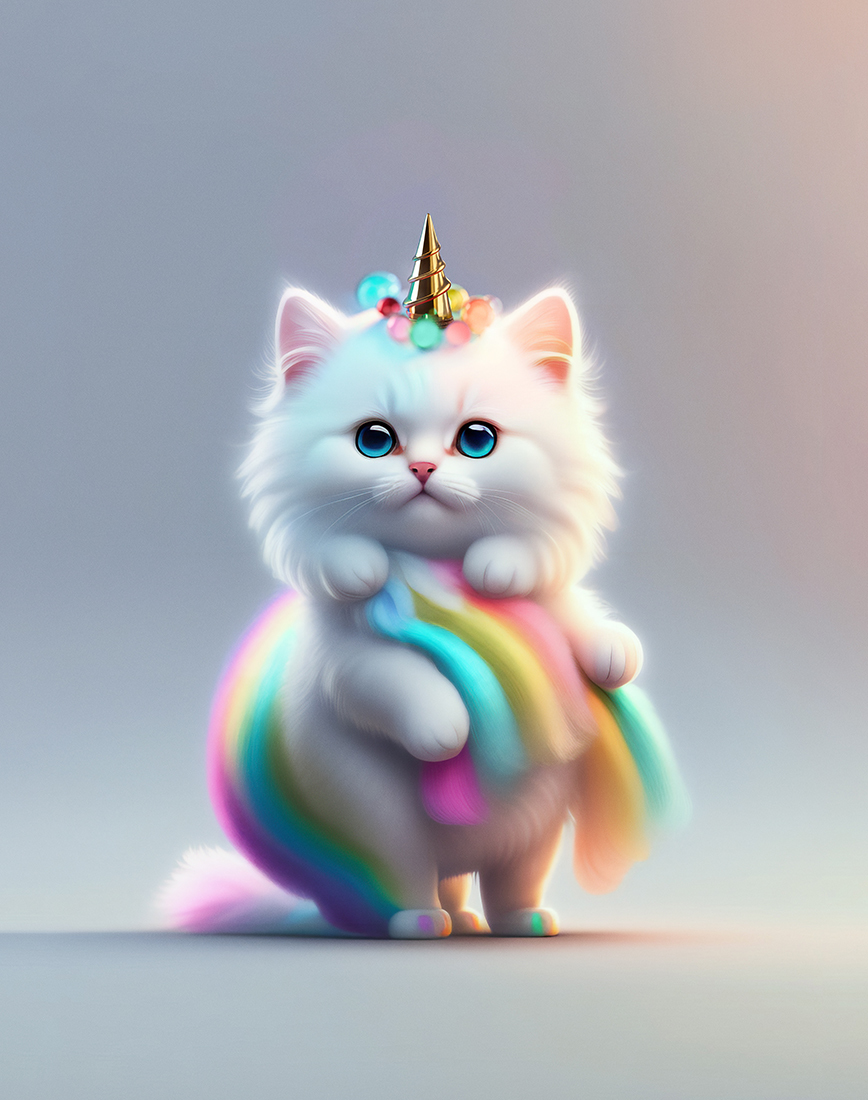
‘Cute’ comes from the Greek word ‘acutus’ (‘clever, smart or sharp’) while the Japanese word kawaii, derived from the phrase ‘face glow’ or ‘blushing’, has come to mean loveable or adorable. Our contemporary understanding of ‘cute’ is drawn from both meanings. ‘Kawaii’ began its global spread in the 1990s and the following room shows the beginnings of Manga and Anime culture alongside other more subversive forms expressing femininity and disaffection with traditional Japanese society.
Hello Kitty installation in the ‘Cute’ exhibition at Somerset House. Credit David Parry PA for Somerset House.
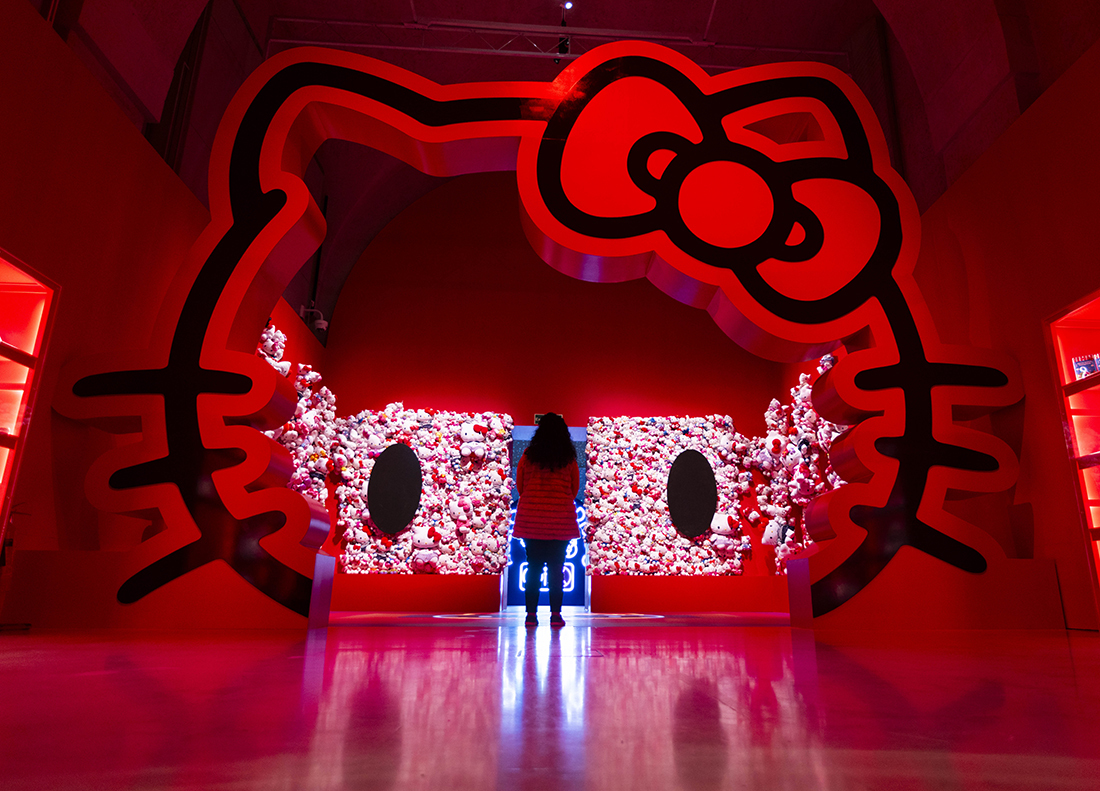
By this time ‘Hello Kitty‘, a character created in the 1970s by Japanese company Sanrio, had gained popularity. A large area is devoted to a collection of Hello Kitty memorabilia with an installation featuring hundreds of plushies. Hello Kitty, we are told, has become a global phenomenon worth about $8bn per year to Sanrio, which is the ‘principal partner’ (sponsor) of the exhibition.
Sugar-coated pill works on display in the ‘Cute’ exhibition at Somerset House. Photo: David Parry PA for Somerset House.
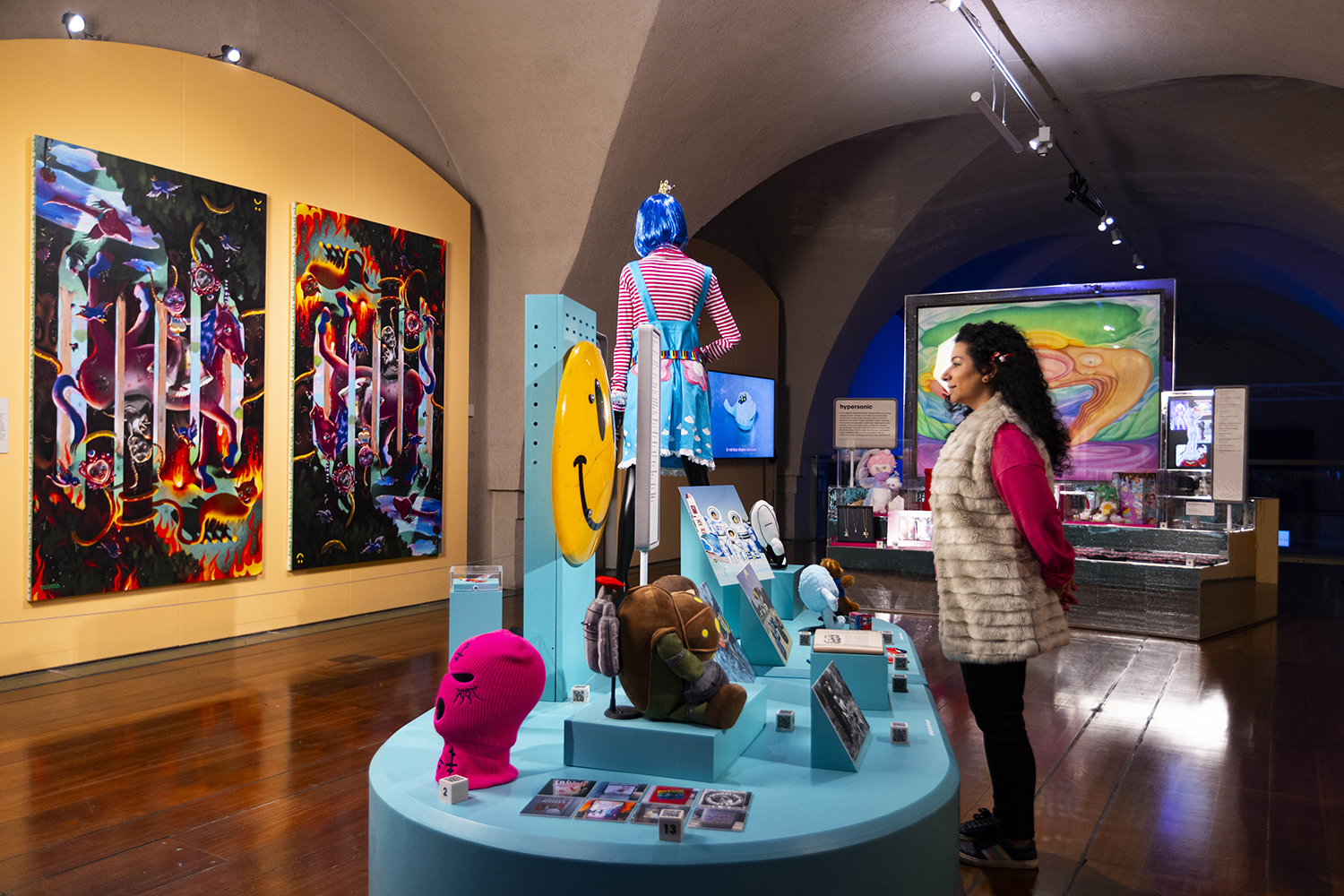
Upstairs, the large gallery space is devoted to work from several contemporary artists who have used cuteness aesthetics to explore their individual responses to the world. Sharing the space are five ‘Cute Cat-egories’; Cry Baby, Play Together, Monstrous Other, Sugar-Coated Pill and Hypersonic, clusters that explore how cuteness pulls on heart-strings, encourages playfulness, subverts expectations, disguises the unpalatable and maximises its form.
Rainbow arch to Hannah Diamond’s girly sleepover room. Photo by Janet South.
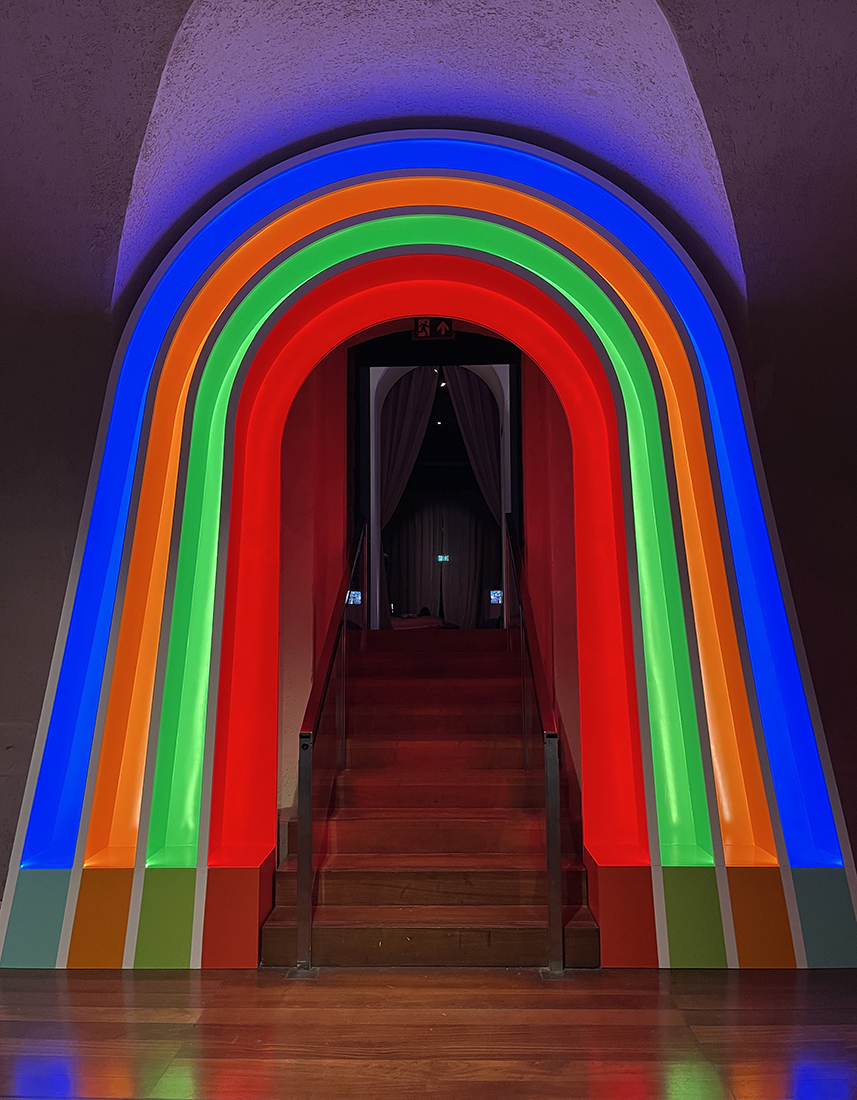
A rainbow arch takes you through to three activity areas where you can chill in Hannah Diamond’s sleepover space, play cute video games in the arcade or interact with your own Sailor Moon avatar.
Hello Kitty wall of plushies. Photo by Janet South.
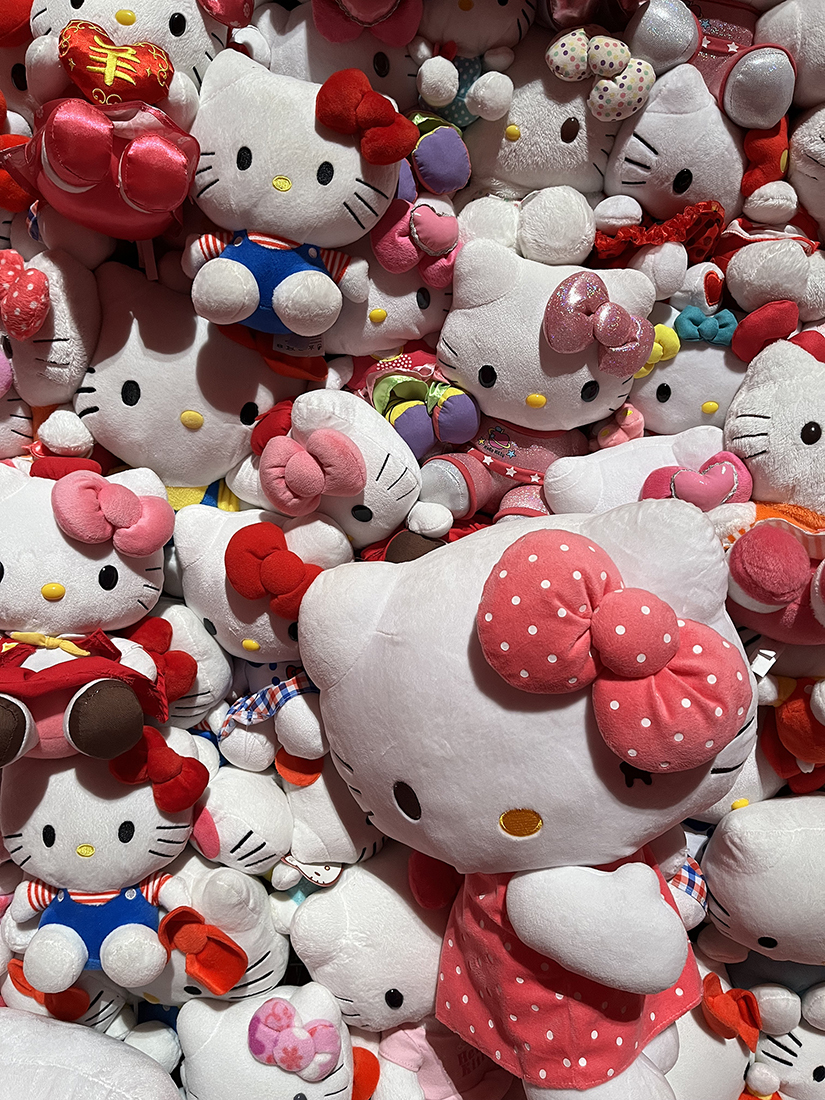
I was sorry that personal favourite Miffy (created by Dick Bruna) seemed to be missing from the toy box of cuteness. Miffy predates Hello Kitty by about twenty years. Kitty and Miffy have ‘history’, which may explain the omission, but Bruna’s contribution to the graphic expression of cuteness should be acknowledged.
The exhibition design is by AOC Architecture, who with renowned stage designer Chloe Lamford have created a fun space with plenty of photo-opportunities and dramatic vistas. Hot colours, fun fur and glitter slash make a theatrical appearance. GTF’s signs and labels use fuzzy, flocked panels inspired by the surfaces of Sylvanian Families.
Louis Wain, Ginger Cat, 1931. Courtesy of Bethlem Museum of the Mind.
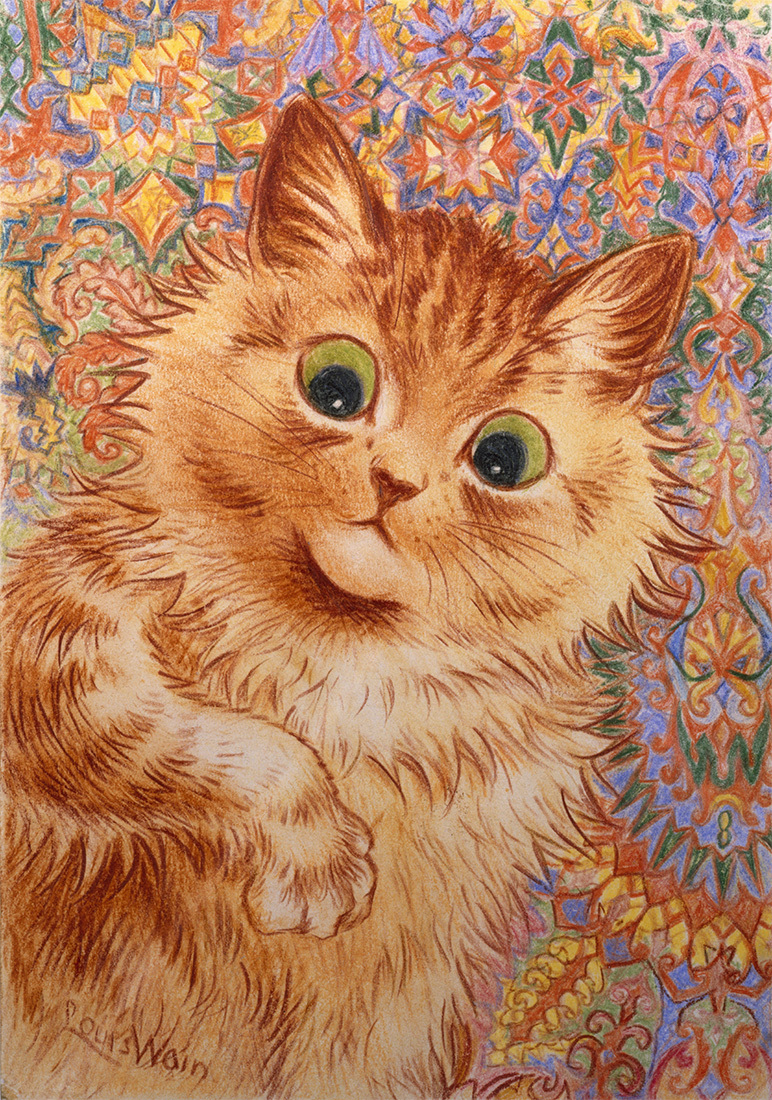
‘Cute’, explains curator Claire Catterall, ‘delights in dichotomies, hybrids and opposites: young / old, ugly / adorable, happy / sad, light / dark …’ The sight of large wide eyes and forehead, chubby cheeks, little chins and mouths remind us of babies and provoke our nurturing instincts to protect the vulnerable but at the same time can initiate clenched fists, gritted teeth and a need to squeeze.
The Cute Cat-alogue, designed by GTF, was printed by Eye’s printer Pureprint. With type set in Avant Garde it aims, says GTF’s Neale, ‘to create a distance between content and interpretation’, showcasing strong imagery with changes in paper stock, adding some holographic diffraction foils for spotlights and illuminating QR codes with ‘ASCII Cats’.
Tickets £11-18.50 via somersethouse.org.uk.
Exhibition design: AOC Architecture with Chloe Lamford.
Graphic design: Graphic Thought Facility.
Curated by: Claire Catterall, Senior Curator at Somerset House.
Janet South, Eye business manager, London
Eye is the world’s most beautiful and collectable graphic design journal, published for professional designers, students and anyone interested in critical, informed writing about graphic design and visual culture. It is available from all good design bookshops and online at the Eye shop, where you can buy subscriptions and single issues.
